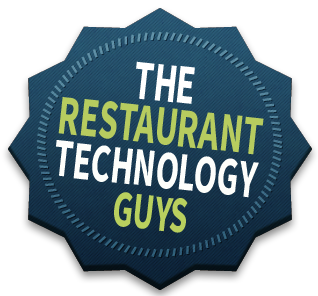Today we will be talking about EMV. Since EMV card processing standards went live in the United States in October 2015, it is important that anyone who has or has not implemented this system understands what it is, what it means, and why there is a push for implementation.
The basics on EMV
First of all, it’s important to understand what EMV is and what it is not. EMV, which stands for EuroPay, MasterCard and Visa, is a set of standards and guidelines regarding smart chip technology, which is what differentiates EMV-compliant cards from the standard magnetic stripe cards that we all have and used to.
As part of the transition to these EMV standards, new credit cards are being issued to consumers that replace their older magnetic stripe cards. These new credit cards come with a secure microprocessor chip built in, which generates a unique number for each sales transaction in a restaurant and verifies a credit card is authentic at the time of a purchase. This makes it virtually impossible to use a fraudulent card on a card-present transaction.
It is a shift in responsibility for what entity pays for charges made using a fraudulent card within your restaurant. In order to influence businesses to adopt the EMV technology standard and help prevent continued fraudulent credit card activity, all the major credit card brands are aligned on shifting counterfeit fraud liability to the business, payment processor or issuing bank that is the least EMV-compliant as of Oct 1, 2015. EMV is a risk decision for a business, not a regulatory one.
If you choose to implement EMV in your business, you will need to install a new kind of terminal device that accepts chip credit cards for payment. You might think it’s as easy as plugging in that new terminal to your point-of-sale and immediately begin taking payments, right?
Kind of.
What you need to know
It is important to understand that the way people have always paid has been significantly different in a restaurant than in other businesses, like retail stores. In retail, speed-of-service is important, but it does not carry the same expectation and sense of urgency as in restaurants. In fast-food and fast-casual restaurants, immediate speed-of-service is an expectation. Table-service operators also look to constantly improve their table turns, even in a more relaxed environment.
Restaurant operators also aim to tailor the payment experience to the convenience of the customer. This is why drive-thru services exist and why service staff have traditionally processed the payment away from the table, so as to impose as little as possible upon the guest.
The operational impacts of EMV
There are two standards of EMV acceptance which will have the greatest impact to your restaurant:
These two EMV standards will have a profound impact on a lot of the ways in which your restaurant operates.
Restaurant owners should recognize that EMV is not going away, and there will be a tipping point in the next 24 to 30 months as adoption hits around 70% where a merchant who hasn’t deployed EMV could be perceived by consumers to be less secure than the rest. To be successful, owners need a POS that is integrated with a provider who has an EMV certification with their processor, along with the PINPad you wish to use. It takes time to roll out new programs, especially when security is involved, so there’s no time like the present to get started.
Need to pass the time until our next post? Check out Custom Business Solutions’ additional article and Whitepaper about EMV. Just yesterday, CBS introduced the NorthStar Order Entry System 4.0 with expanded, robust capabilities for improving operations and increasing efficiencies for restaurant and food service businesses. This new version also has a new and updated EMV verification process. Check out the article and the NorthStar Order Entry!
Join us next week when we discuss mobile payments and how their effect on the market. Thanks for stopping by!
